Le Mans circuit lap guide
Alex Brundle has been one of the LMP2 stars at Le Mans in recent years. In 2017 he stood on the podium, second in class and third overall, and was at the forefront of a thrilling LMP2 battle last year. This summer he’s back in the Inter Europol Competition ORECA. We asked him to talk us around this mighty track
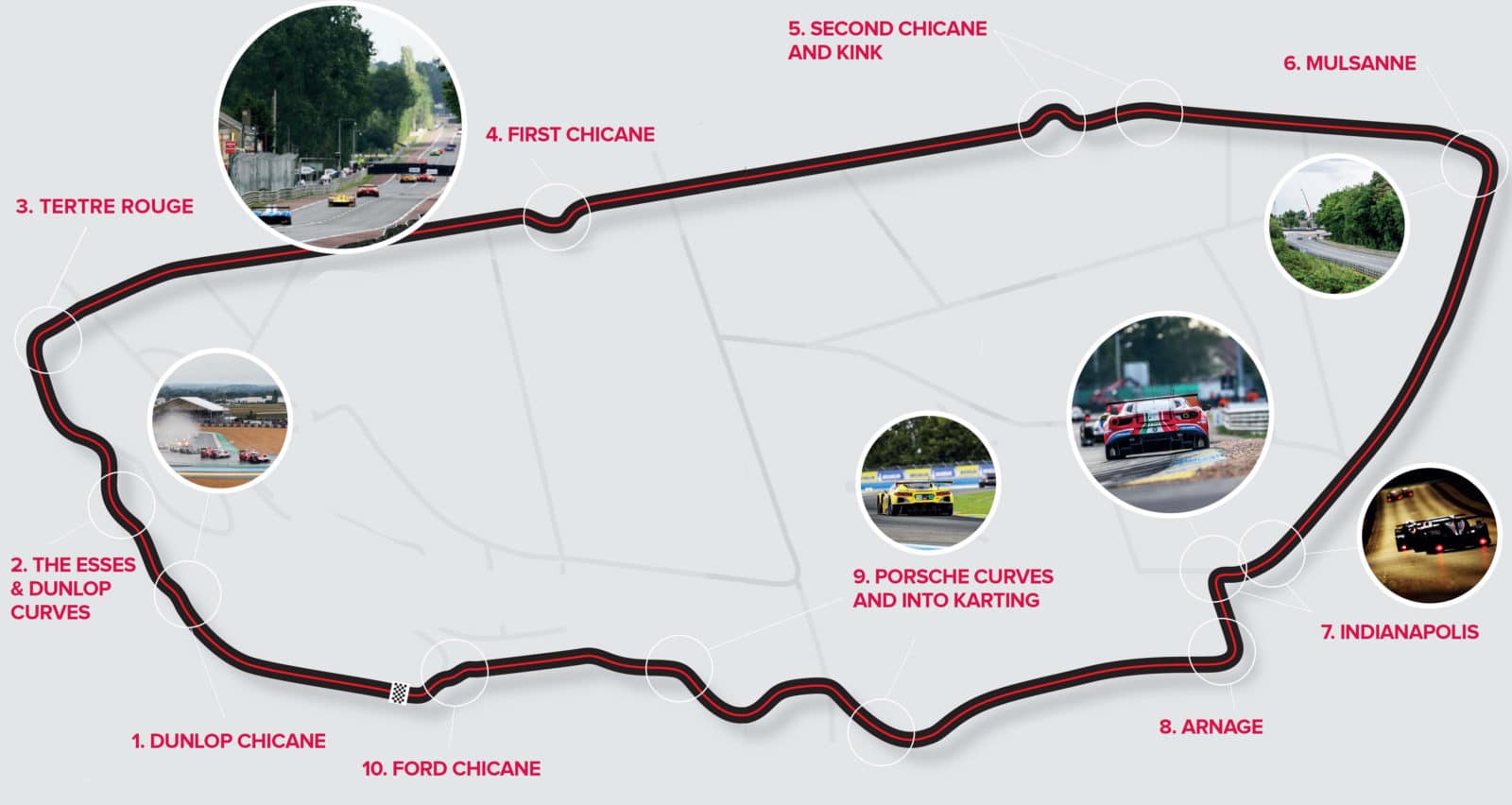
Circuit length 8.46 MILES
Lap record (race) Mike Conway, Toyota TS050 Hybrid, 2019, 3min 17.297sec
Lap record (qualifying) Kamui Kobayashi, Toyota TS050 Hybrid, 2017, 3min 14.791sec
 1. Dunlop Chicane
1. Dunlop Chicane
“It’s easy to brake too late, lock the rears, but if you get the first apex right the second follows nicely. It’s faster than you think and you can carry quite a lot of throttle through the second part as the track curves uphill and you crest the rise under Dunlop Bridge. You can be quite rude with the track limits on the exit depending on how closely they’re watching us. It’s an ever-evolving ‘arms race’ between the drivers and Race Control.”
2. The Esses & Dunlop Curves
“You need to watch for the bump in the right hander after the left-hand sweeper. You’re moving towards the limit of grip so it’s hard to place the car. The banking into the bottom of the ‘bowl’, the base of the corner, is big and it rubbers up through the race. Don’t clout the kerb on the right in the second part of the Esses because it will put you in the outside wall which is close to the track. If you get all this right it’s very satisfying and you’re into Tertre Rouge, with a lot of speed now.”
3. Tertre Rouge
“You must take the inside kerb. It hooks the front in, and you can get on the power and use the outside kerb to help turn the car. It’s all about the exit, hard on the throttle as you head down the fastest part of the track. Now you move through the gears, maybe check temps and pressures, but the pits are watching all that these days, and take a view of the traffic ahead at the first chicane. Tertre Rouge is the most important place to get right for a quick lap because it governs your speed through the right-hand curve on the first part of the Mulsanne and then on down towards the chicane.”
 4. First Chicane
4. First Chicane
“I’m planning forward now, where I will pass the slower cars, and looking for the blue 100-metre board on the left. If someone took these boards out in the night, a lot of people would crash. You can brake late as long as you have the car straight. If you brake and turn in at the same time you can have a rear locking moment. I like to use every kerb through the chicane, borrow some Tarmac on the exit, and get on the power early. Then it’s off down the Mulsanne, managing the traffic.”
5. Second Chicane and kink
“I much prefer the second one, much more open, third gear in, then second on the right-hand apex, on the power for the exit which is more friendly and open, not so tight and messy as the first one. The kink is easily flat in the dry; in the wet it takes ages for the track to dry on the left-hand side.”
 6. Mulsanne
6. Mulsanne
“On down to Mulsanne Corner which has changed a lot over the years. It’s much less bumpy than it used to be. You can go straight over the inside kerb and roll the car through. Drive all the way along the exit kerb in qualifying; in the race, be more gentle.”
7. Indianapolis
“Down to Indianapolis, the only place I use the headlamp flash, to make sure the slower cars know I’m there. The flash means ‘I’m going to pass you before, or on the way to, one of the kinks, so I want you to let me go up the inside of you’. The kerbs on the inside are huge sausage kerbs. If you hit one of those you’re going to have a nasty accident. There’s no time to make in the first part of Indianapolis. All the time is in the left hander, second gear, don’t go wide near the gravel, and try to pass traffic before Arnage because the GTEs always claim the middle of the road.”
8. Arnage
“The speed through Indianapolis and Arnage can depend on where you find the slower GTEs. Ideally you keep to the left into Arnage, borrow some left-hand kerb on the way in, first gear, get to the inside kerb, roll the speed through, and the exit is all about traction. There’s more space on the exit now, so use the full width of the track on the left for the shortest distance as you build speed down to the Porsche Curves.”
 9. Porsche Curves and into Karting
9. Porsche Curves and into Karting
“It’s bumpy in the first part. If there’s a car ahead of you and you’re feeling brave, you can pass round the outside of the first part. Try not to brake too much. A big bump unsettles the rear, and it’s a deceptively long run through the two flat-out lefts before the right hander. The barriers are close; don’t get on the kerbs – they can suck you in. This used to be the most frightening part of the track but now there’s a lot more space to the left and across the middle of Karting. Don’t grain the front left early. There’s a lot of energy going on, so you don’t want to scrub the tyre. In qualifying you’re desperate not to lose your lap in the final part of Karting. It’s easy to put all four wheels off there. Marbles build up on the outside so you need to stay on the inside.”
10. Ford Chicane
“After Maison Blanche, and the little chicane known as Corvette, you’re heading for the Ford Chicane and the end of the lap. You brake about where the pitlane begins on the right-hand side. The trick is to get the car into the first part of the chicane by going right over the first left-hand kerb because there’s a nasty lip on the front of the right-hand kerb which can damage the car. In the second part take a lot of kerb on the left, lean the car hard against the final kerb, bundle the car through and head for the start/finish line. In the race, you’ll take a step back from all those kerbs to give the suspension a chance.”
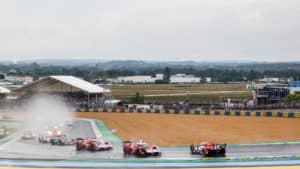 1. Dunlop Chicane
1. Dunlop Chicane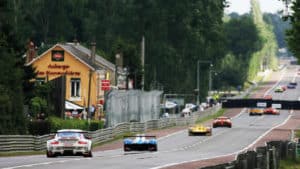 4. First Chicane
4. First Chicane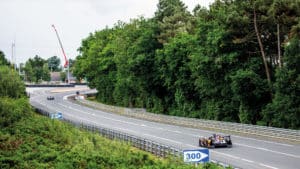 6. Mulsanne
6. Mulsanne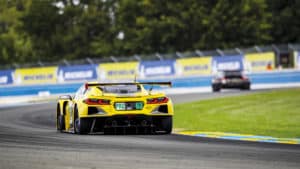 9. Porsche Curves and into Karting
9. Porsche Curves and into Karting